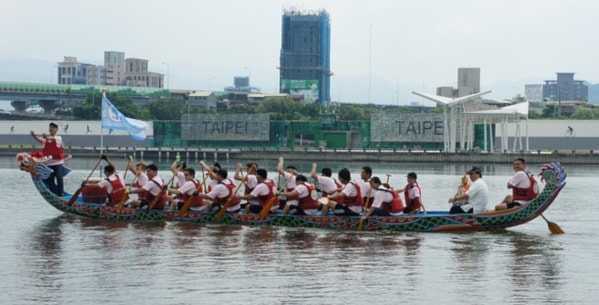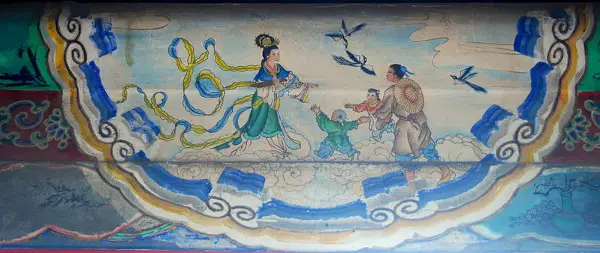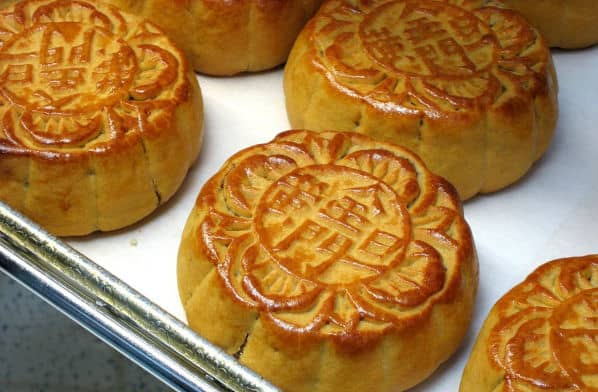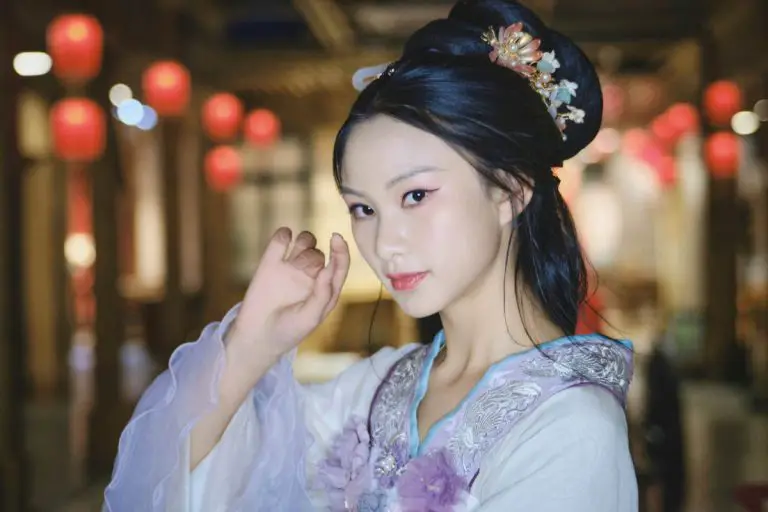The traditional Chinese festivals are the perfect representation of the richness of China’s culture and history. If you happen to be in China or are planning to visit China soon, visiting around the time of major Chinese festivals will really introduce you to life in China.
The most important Chinese festival (and holiday) is the Chinese New Year which is celebrated not only in China but also in various other Asian countries. However, there are also many other festivals you can experience.
Here are brief descriptions of major Chinese festivals that you need to know.
1. Spring Festival – Chinese New Year
The Chinese New Year is considered the most important festival in Chinese tradition.
China doesn’t use our normal (Gregorian) calendar but instead use their own Lunar Calendar. So, Chinese New Year doesn’t happen every January 1st due to the difference between the two calendars, but between January 21st and February 20th. The Chinese New Year starts on the second new moon after the Winter Solstice and will mark the start of spring (in China spring starts between early March and April). This is why people also refer to this festival as Spring Festival and also Lunar New Year.
There are many different mythologies behind this festival, but all of them always contain a mythical monster called Nian. Nian loves to eat villagers, and according to a legend, a wise man told the villagers that they can ward off Nian by making loud noises while hanging red scrolls on their doors.
Based on this folklore tradition, the Chinese New Year festival is celebrated by playing loud drums and firecrackers. We’ll see everything in red color (from clothing to decoration), and we’ll also see a lot of lion dances ( 舞獅 wǔshī) that represent the Nian.
There are various traditions tied with the Chinese New Year festival. We’ll need to say “gong xi” which means “respectful joy ” or “best wishes“, and there is also the important red envelope tradition. Parents/elders give money inside the red envelopes to children and relatives that are still unmarried to wish for good fortune in the new year.
The Chinese New Year is often celebrated as a family reunion. It’s common for Chinese and people of Chinese descent all over the world to have an annual reunion dinner where the whole family gathers together during the Spring Festival.
The Kitchen God Ritual
One lesser-known but culturally significant tradition associated with Chinese New Year is the Kitchen God Ritual (祭灶 jìzào), typically performed a few days before the Spring Festival begins.
The Kitchen God, believed to report the household’s behavior to the Jade Emperor in heaven, is sent off with offerings—most commonly sticky sweets like maltose or glutinous rice cakes. The idea is that his mouth will be too sweet—or too sticky—to speak ill of the family. Paper effigies of the Kitchen God are often burned to symbolically send him off to the heavens.
This ritual reflects the Confucian ideal of moral reflection and accountability within the family unit and adds a spiritual dimension to the otherwise festive atmosphere.
Read More about Spring Festival: Spring Festival: The Chinese New Year (History, Legend, Traditions) – Opens in new tab
2. Lantern Festival / Yuen Siu Celebration
Often considered as a part of the Chinese New Year, the Lantern Festival (Yuánxi o jié) is held on the 15th day after the Chinese New Year, marking the end of the New Year celebration.
As the name suggests, in this lantern festival people will light lanterns and fireworks. When the full moon appears, they will launch the lantern to fly away while wishing for health, good fortune, and a trouble-free year.
Another popular activity during the Lantern Festival is eating Tang Yuan, a ball-shaped dish made of glutinous rice flour. Each ball contains a type of sweet fillings inside it, whether it’s white sugar, brown sugar, sweet sesame, peanuts, bean paste, chocolate paste, and others. Tang Yuan can be eaten by itself (steamed or fried) but is typically served in a hot clear broth (savory) or hot ginger-infused syrup (sweet) depending on your preference.
Take a look at these awesome Chinese Lanterns.- Aff.link
3. Ching Ming Festival
The Ching Ming Festival (or Qing Ming depending on dialect, 清節) is celebrated every March or April. It is also called Tomb Sweeping day, and as the name suggests, it is a festival when people commemorate and show respect to their ancestors by visiting their graves. They will burn sticks, incense, and joss paper (representing money) for the dead ancestors, and they’ll also sweep the tombs, add fresh soil, and remove the weeds. If the graves are in bad condition, they may also repair them and place fresh plants or flowers.

It is also common for people to put willow branches on the tomb and also on their doors since it is said that willow branches can ward off unwelcome ghosts.
The Ching Ming day falls on the first day of the fifth solar term of the Chinese calendar, which in our calendar is the 4,5, or 6 April in a given year. However, the history behind the Ching Ming Festival changes started in the Zhou Dynasty (1046-221 BC).
In this era, the emperors and many rich nobles held a massive and luxurious banquet to honor their ancestors. They offered many sacrifices as a form of blessing for them and hoped to gain prosperity.
Then in 732, Emperor Xuanzong of the Tang Dynasty declared that each person only needed to formally respect the ancestor every first day of the Ching Ming solar term. And from this declaration, the Ching Ming festival is born.
Kite flying is also common during the Ching Ming Festival when many people launch kites with lanterns tied on them. So, in the evening, these lanterns will glow together like twinkling stars, which can be a sight to behold. Many people will cut loose the string and let the kites fly with the lanterns, which is believed to indicate good luck and ward off upcoming diseases.

4. Dragon Boat Festival
Also known as 端午, duānwǔ, the Dragon Boat Festival is celebrated with the Dragon boat racing and eating zongzi. This festival is held to appease God and make any kind of disease go away. It is held around the month when in ancient China, flood happens almost annually, and it was also the time when bacteria and insects breed very fast during the midsummer, so many ancient Chinese tend to get sick and die.

The ancient Chinese believed that they were descendants of the heavenly dragon, so they used to build and ride dragon-shaped boats with the hope that the real dragon would appear and protect them during this unfortunate time.
There are many folklores and legends related to this festival, but the most popular version is that the festival is held to show respect to the patriotic poet Qu Yuan, who drowned himself to protest against an evil emperor of his era.
Qu Yuan lived during the warring states period (also known as the spring and autumn era). He also had a noble birth in the state of Chu (one of the states during this period of time). At this time Qin was another warring state that was on a mission to conquer all of China
When the capital city of Chu was conquered by Qin, Qu Yuan mourned, and on the 5th day of the 5th Lunar Month, he committed suicide by drowning himself in Miluo River. This is why the Dragon Boat Festival occurs on the fifth day of the fifth month of the Chinese calendar (May-June in Gregorian calendar).
A popular tradition of this festival is to eat the zongzi, rice dumplings made of glutinous rice that is shaped like a triangle and wrapped with bamboo leaves. According to folklore, the zongzi would frighten any fish which would harm the body of Qu Yuan after jumping into the river.
Of course, there’s also the Dragon boat itself. It is said that people raced out in their dragon boats when Qu Yuan jumped to the river in an attempt to save him.
Read More about Dragon Boat Festival: Chinese Dragon Boat Festival (Origins and Traditions) – Opens in new tab
5. Double Seventh Festival
Also known as Qixi or Qiqiao (七夕節) Festival, this festival is celebrated on the seventh day of the seventh month of the traditional Chinese calendar, which is around August in the Gregorian calendar.
The festival is held to celebrate the annual meeting of the cowherd and the weaver girl in Chinese romantic mythology, so this festival can be thought of as the equivalent of Valentine’s day in Western cultures.

The legend behind this festival told the story of Zhinü, a weaver girl, and Niulang, a cowherd, and the earliest-known reference of this famous story dates back to the Western Zhou period (1046-771 BC), told in a poem from the Classic of Poetry (Shijing).
It was told that Niulang was an orphan who lived with his brother and sister-in-law and was often abused by the sister-in-law. Eventually, Niulang was kicked out of the house together with an old cow. The old cow suddenly spoke out, telling Niulang that a fairy, the heavenly weaver, will come.
What the cow said came true, and Niualng saw the beautiful fairy, fell in love, and got married to her.
However, the Jade Emperor of heaven found out about this and was furious, so he sent minions to take the heavenly weaver back to heaven. Niulang, heartbroken, decided to chase after the weaver Zhinü, and was helped by the magpies who built a bridge so Zhinü can meet Niulang. Moved by their love, the Jade Emperor allowed this couple to meet on this Magpie Bridge once a year on the seventh day of the seventh month, which marked the origin of the festival.
Today, Chinese people will gaze up at the sky to look for the constellations Vega and Altair, while Deneb represents the bridge between the two stars. This festival is also related to the Tanabata festival, celebrated in Japan, and Chilseok festival, celebrated in Korea, with similar romantic mythologies.
Read More about Dragon Boat Festival: Qixi Festival or Double Seventh Festival (Legend – Origin – Traditions) – Opens in new tab
6. Hungry Ghost Festival
Just like in the Western world we have Halloween as the festival to remember and celebrate the dead, in China, there’s the Hungry Ghost festival.
The Hungry Ghost festival is held on the 15th day of the 7th month of the Lunar Chinese calendar, which is around August-September in the Gregorian calendar.
According to Chinese legend, this is the time when the gates of the underworld open, so spirits and ghouls would be unleashed from hell. During this time the spirits from the afterlife will feast, and so this festival is held so that we—the living— can entertain the spirits by offering foods, burn incense, sticks, fake paper money, and so on. It is believed that by entertaining the ghosts, we can safely avoid their wraths.
This festival is believed to originate since the time of the early Han Dynasty. Yet, according to the Shi JI (Record of Grand Historian), the festival back then was only held for one day as a form of gratitude towards the agriculture gods.
As time goes, the tradition changes, mainly due to the Buddhism influence that believes in the suffering of the dead, and the festival evolved into the form we celebrate today.
Due to the nature of the festival, there are several taboos that you shouldn’t do during this festival period, including:
- Don’t hang clothes outside at night
- It’s better to come home before dark and don’t walk alone at night
- Avoid changing home or start a new business (it conceded a stroke of bad luck to do so during this period)
- Avoid swimming at night
- Don’t take pictures at night
- Don’t whistle at night
7. Mid-Autumn Festival
The Mid-Autumn Festival (Zhōngqiū Jié) is considered the second-most important of all the major Chinese festivals, only second to the Chinese New year.
The Mid-Autumn Festival is held every 15th day of the 8th Month of the traditional Chinese calendar, which as the name suggests, is in the midst of Autumn in China. In the Gregorian calendar, this festival happens around September or October.

This period is typically when the moon will shine the fullest and the brightest each year, and is also a time when the crops will be harvested. So, this festival is also celebrated to commemorate the bountiful harvests.
A very important tradition for this festival is eating the famous mooncakes, typically in the form of round pastries around 4” (10 cm) in diameter and 1 ¼ to 1.5” (3-4 cm) in thickness, filled with a rich think filling made from lotus seed paste or red bean paste. This is also why this festival is also popularly known as the Mooncake Festival.
According to history, people started celebrating this festival around the time of the Shang Dynasty (1600-1046 BC). Back then, people celebrate all their harvests every full moon.
However, this tradition evolved during the Tang Dynasty (618-907 AD), when the emperor made this festival a staging ritual at the palace. It kept evolving gradually throughout the Ming and Qing dynasties into the Mid-Autumn festival we know today.
As with the other major festivals, there are also legends and folklore surrounding the Mooncake Festival. The most notable is the tale of a hunter named Hou Yi and his wife Chang E.
According to the legend, Hou Yi became a hero by shooting 9 suns in the sky and was given an elixir of immortality by the gods. However, Hou Yi’s apprentice tried to steal the immortal elixir, and so Chang E— knowing what the apprentice would do—, drank the elixir instead and floated to the moon after.
Hou Yi, after he learned what happened to Chang E, prepared a feast every year when the moon is at its fullest, hoping that Hou Yi could get a glimpse of Chang E’s shadow.
Although there’s a sad story behind it, the Mid-Autumn Festival is now widely celebrated as the second-most important major Chinese festival, not only in China but also in many other countries. The mooncake is also popular all over the world and is often presented as luxurious gifts or eaten as delicacies even outside the Mid-Autumn Festival.
Beyond Mooncakes: Regional Mid-Autumn Festival Delicacies
While mooncakes dominate the Mid-Autumn Festival, there are diverse regional treats worth exploring. For example:
- Suzhou-style mooncakes are known for their flaky pastry and savory meat fillings.
- In Yunnan province, people enjoy ham mooncakes with a salty and slightly sweet flavor.
- Teochew mooncakes, popular in Guangdong, are celebrated for their delicate crust and taro or mung bean paste fillings.
Some regions even celebrate with pomelos, taro dishes, and cassia wine, reflecting the harvest season and reinforcing the festival’s agricultural roots.
Take a look at these delicious Mooncakes.– Aff.link
8. Chung Yeung Festival also called the Double Ninth Festival
The Chung Yeung Festival, also known as Autumn Remembrance, is held every 9th day of the 9th month of the traditional Chinese calendar, this is also why it’s often called the Double Ninth Festival. In the Gregorian calendar, this festival is celebrated around October.
This festival is not only celebrated in China but also in Japan (known as Chōyō or the Chrysanthemum Festival), and Korea (known as Jungyangjeol).
The Chung Yeung festival was originally celebrated as the day when a man named Heng Jing defeated a monster that would bring pestilence. It is believed that Heng Jing finally beat the monster on the ninth day of the ninth lunar month.
However, in modern times, the day is celebrated by hiking and appreciating Chrysanthemum flowers, as well as flying kites, welcoming married daughters back home for visiting, and making flower cakes. Also, similar to the Ching Ming festival, it is common to visit parents’ and ancestors’ tombs during this festival.
There are several different folklore and legends about how this festival became a part of the Chinese tradition, but the story about Heng Jing (also known as Huan Jing) is the most famous one.
It is said during the Han Dynasty (25-220 CE), there was a demonic presence that brought death in Runan (a region that is located in Central China). There is one villager named Heng Jing that vowed to eliminate that demonic presence.
Heng Jing sought a great sage named Fei Changfang, who lived in the mountain. Fei Changfang then gave Heng Jing the legendary green sword that can kill the monster, and he also told Heng Jing that the demonic presence will return on the 9th day of the 9th month. Fei also gave dogwood leaves and Chrysanthemum wine, which Heng Jing then gave to the villagers to drink for protection against the monster.
This is why during the Chung Yeung festival, many people keep the tradition of hiking the highest possible peak near them while keeping dogwood leaves and Chrysanthemum wine with them.
Check out our “Free Culture Library“. We have compiled some great free resources, about Chinese culture, for your research.
Stay in Touch
 Join our newsletter by using the forms on this website or click here!
Join our newsletter by using the forms on this website or click here! Follow us on Google News
Follow us on Google News Follow us on Facebook
Follow us on Facebook
Feature Image from Depositphotos






